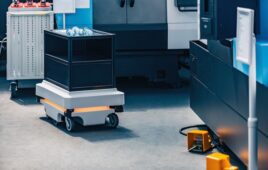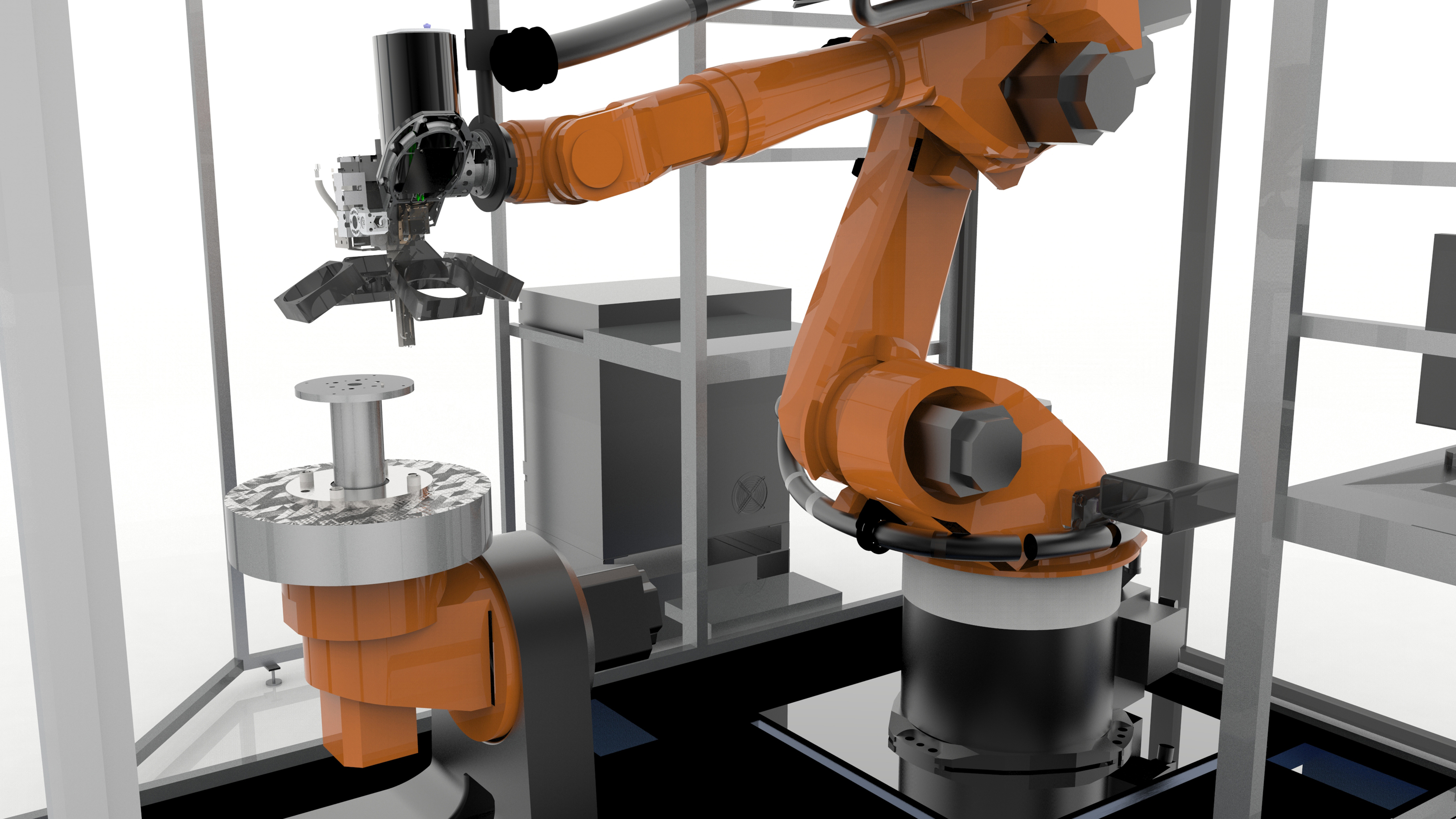
Photo Credit: Stratasys
Stratasys recently announced two unique developments in fused deposition modeling (FDM) technology which will help 3-D printing realize its potential as a manufacturing tool for mainstream aerospace and automotive products. While the two advanced technology demonstrators they unveiled address very different sets of manufacturing requirements, they are both capable of building bigger, stronger, more affordable parts at speeds that are over an order of magnitude faster than any other FDM machine available today.
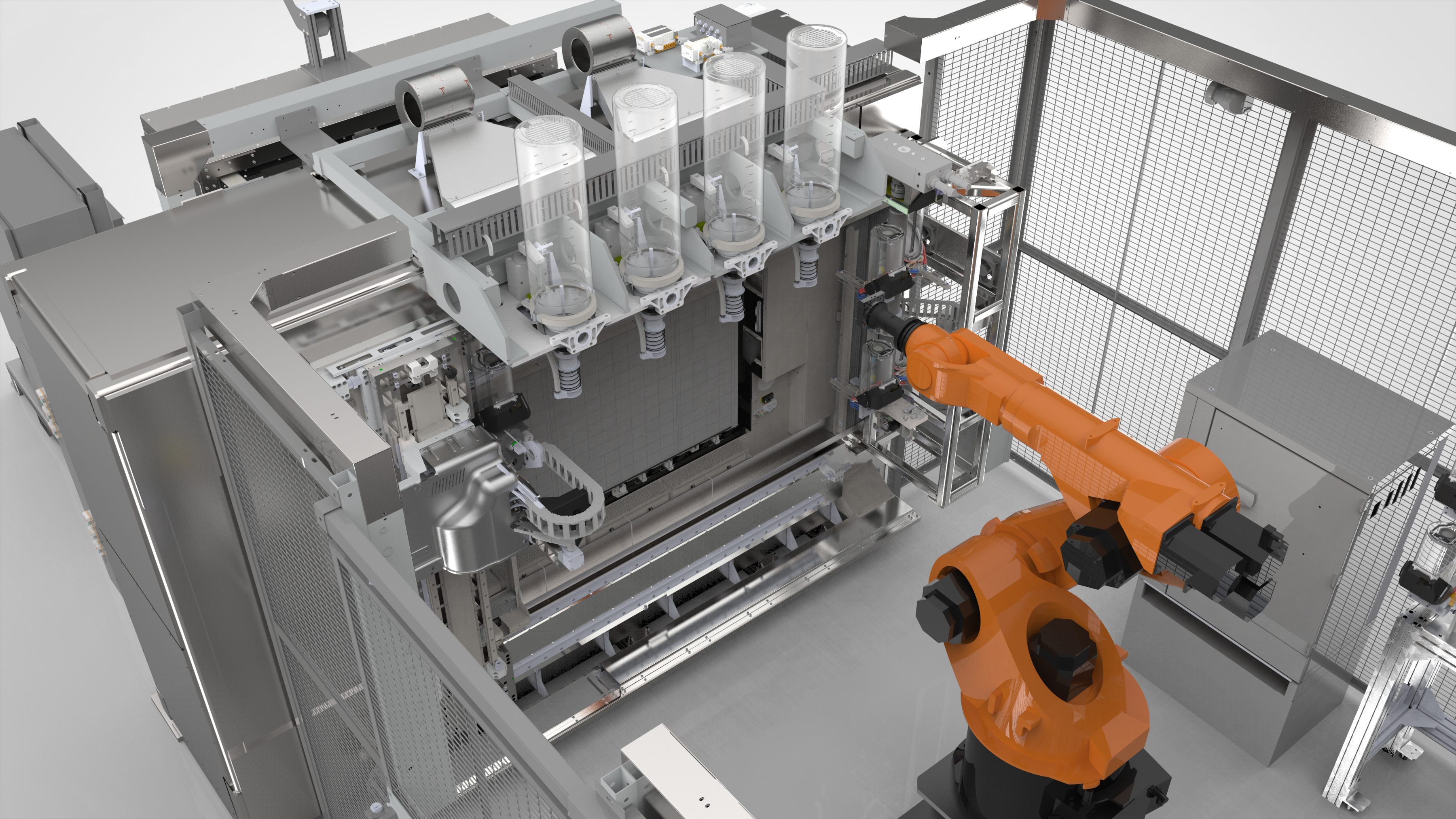
Stratasys’ Infinite-Build 3D Demonstrator for Large Thermoplastic Parts and Tools. Photo: Stratasys
3-D Goes to Great Lengths
In order to create a machine that could produce very large lightweight thermoplastic parts (and tools) with highly repeatable mechanical properties, the designers of Stratasys’ Infinite-Build 3D Demonstrator had to re-think the 3-D printing process. Instead of laying up its parts vertically, the Infinite Build demonstrator turns the process sideways and builds them horizontally. To do this, the machine employs a print head which remains in a fixed location while the 30”x48” build platen rides on a horizontal track and creeps away from the fabrication area as the part is printed.
Although orienting the printer’s Z-axis perpendicular to the pull of gravity presented several technical challenges, it allows the length of the parts it creates to only limited by the length of the track and its related support system. Stratasys says that the present system can fabricate parts as long as 50’ and that production systems may be capable of even greater lengths.
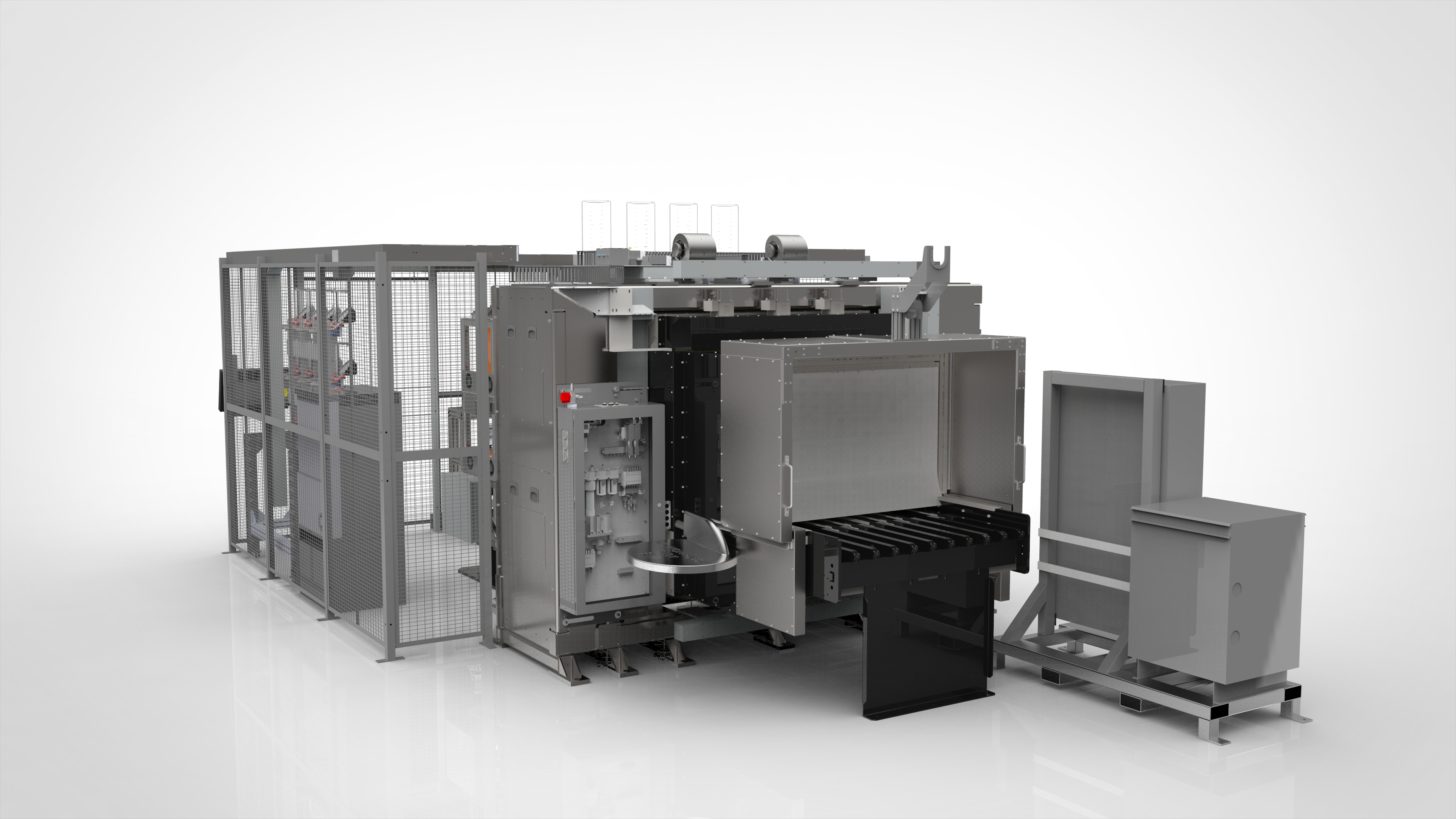
The Infinite Build system’s horizontal fabrication technique enables it to build structures of nearly any length. Photo: Stratasys
A Closer Look
Like many conventional printers, this system starts its print on a “build sheet” that is secured to the build platen via vacuum. Next, the platen and the base of the stationary X-Y opening receive a set of clips that serve as attach points for the object’s printed support structure, known as its “keel”, which grows and moves along with the part as it is extruded.
The demonstrator unit’s print mechanism consists of a robotic arm (made by Kuka) which can select one of four interchangeable extruder heads, each with its own supply printing material. Typically, one print head is used to lay down support material, leaving the option of using up to three different colors during the build. There is also auxiliary rack on the opposite side of the work cell which can hold 12 more interchangeable work heads. These can be extruders or other tools, such as drills, abrasive wheels, or inspection devices.
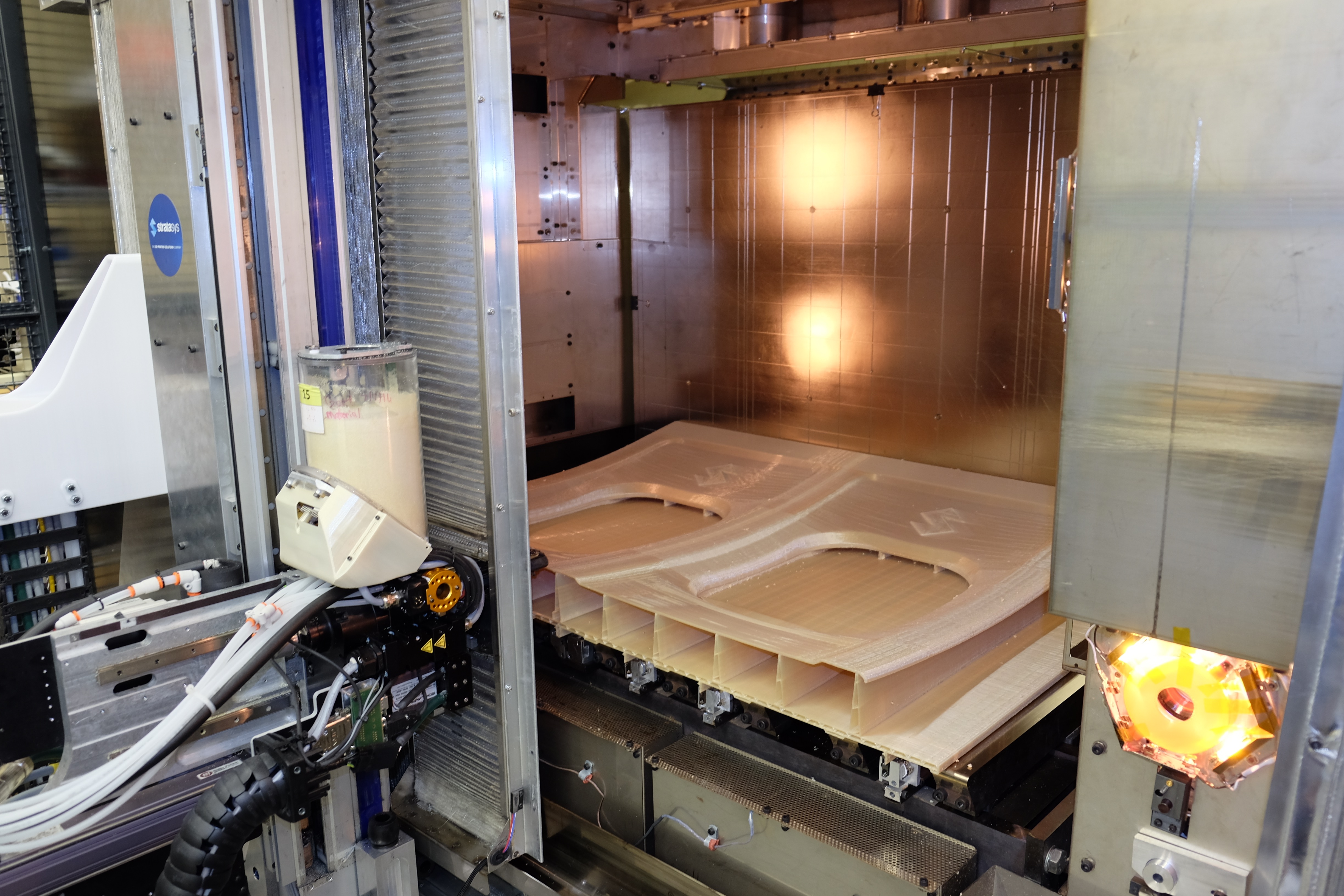
The Infinite Build Demonstrator fabricates an airliner interior panel. Note the printed keel structure below the panel which prevents it from sagging or shifting during the printing process. Photo: Stratasys
Indexing the print head between layers is handled by both the print head and the retraction system. The print head can be indexed along the Z-axis to lay down as much as 2” worth of material before the part itself must be retracted along the rails. Each of these minor index steps takes roughly 50msec. Once the part is retracted, the print head is then re-indexed to pick up where it left off. Aligning the head precisely is an exacting process which can take up to 25 seconds.
In order to maintain precise dimensional control over the print, Stratasys had to also carefully control the thermal environment surrounding the print area. They do this using a 5-sided oven which provides a constant thermal gradient for consistent cooling across the first few inches of the build.
Cool Runnings
Stratasys also took a unique approach to the printer’s extruder mechanism. Instead pushing a filament through a heated extruder nozzle like most FDM machines, the Infinite Build system’s print head uses a screw extruder to liquefy a stream of plastic micro-pellets before they are applied to the build area. At present, the system is using Stratasys’ Ultem 9085 PEI build material plus a specialized support material whose mechanical properties are suited for horizontal build environments.
The screw extruder runs at a much lower temperature because it uses shear force as the primary liquefaction mechanism. In addition to eliminating the potential for scorching the plastic, the cooler-running screw mechanism can push a lot more material through its nozzle than filament-based extruders. It delivers a maximum flow of 20,000+ micro-cubic inches/sec (mci/s), about 10X the maximum flow rate of today’s fastest conventional FDM machines. It also supports very fast changes in extrusion volume needed to keep its layers a constant thickness as the print head changes speeds while negotiating corners or curves. Statasys is working on an extruder that delivers up to 250,000 mci/s and expects a working model to be available by the end of 2016.
When combined with the precise motion control afforded by the Kuka robotic arm, the extruder can lay down linear beads at up to 2m/sec and turn 90-degree corners in 16msec. The present system can deliver bead thicknesses ranging from 0.010 up to 0.040 or higher. Its bead width is also variable by using different extruder tips, typically ranging from 0.010” to 0.100”.
Despite its high resolution, the extruder system still produces small, but visible, layer lines in the objects it prints (although they do not affect their mechanical properties). Stratasys says that it is developing post-process techniques which can be applied when a fine finish is required.
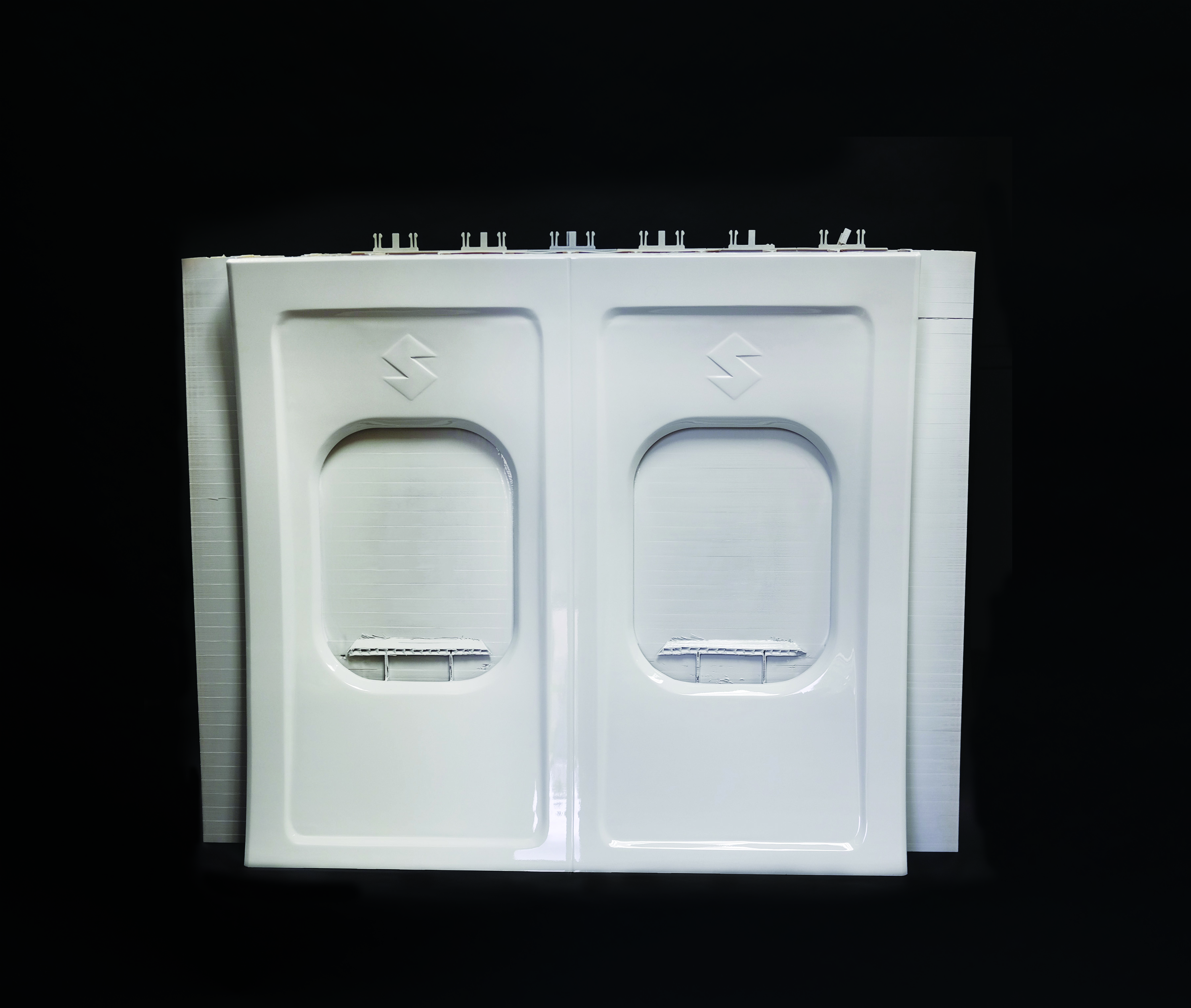
This window panel, used in airliner interiors, was printed on the Infinite Build Demonstrator. Photo: Stratasys
First Commercial Applications
Given the Infinite Build Demonstrator’s capabilities, it’s no wonder that aerospace manufacturer Boeing played an influential role in defining its requirements and specifications, with an eye towards meeting their needs for production of low-volume, customized, lightweight flight parts. One of the first applications for the system is expected to be the large, complex plastic panels used to finish the interiors of today’s aircraft.
As an example of what’s possible, Stratasys and Boeing cooperated to produce a window panel which could be used in one of its production aircraft. The panel measures 32” x 40” and is 1/2“ thick. It took the system 60 hours to fabricate while running in its fine feature mode.
There is also interest in producing similar panels for use in trains, busses and other large-capacity transportation systems. Ford Motor company is also exploring automotive manufacturing applications for the Infinite Build Demonstrator.
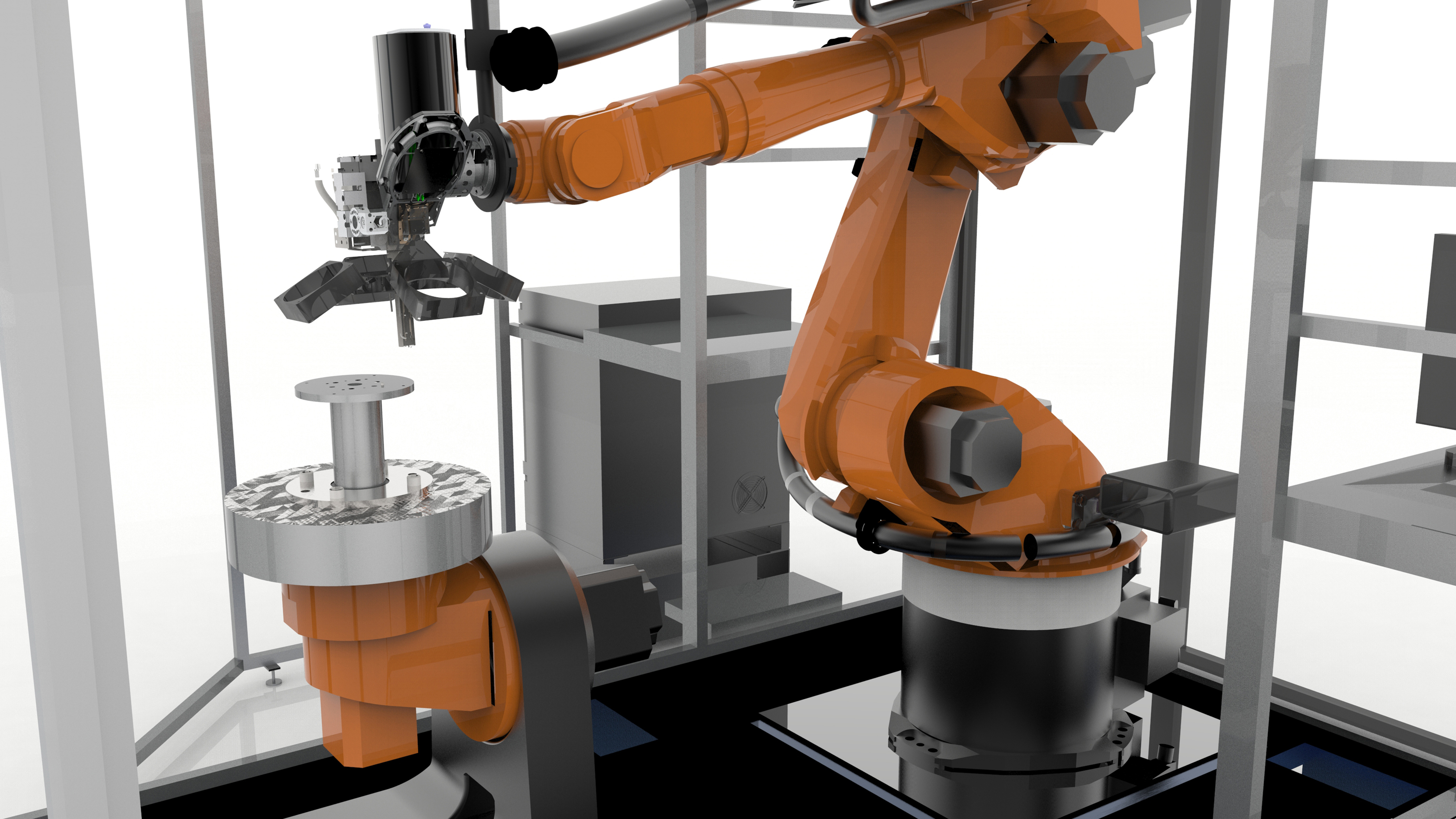
Stratasys’ Robotic Composite 3D Demonstrator. Photo: Stratasys
Building Strong
Stratasys’ other Demonstrator uses an 8-axis robotic system to produce composite parts that have one or more degrees of directional strength. Known as the Robotic Composite 3D Demonstrator, the prototype system extrudes thermoplastic (polyamide, aka Nylon) containing chopped carbon fibers which align with the direction of flow to provide directional strength which enables production of stronger, lighter parts. The current system can use either conventional filament or micro-pellets. In addition, Stratsys says that there is a clear roadmap to a system that uses continuous fiber which will produce even stronger parts.
Like its companion, this Demonstrator does not follow the simple 3-axis X-X-Z coordinate system used by most FDM machines. Instead, the build surface is an 18-inch table that rests on a 2-axis rotary positioner while a 6-axis robot controls the Demonstrator’s extruder head. This 8-axis system eliminates the need for discrete layers, enabling individual features to be constructed as discrete elements (instead of as discrete layers), each with their own directional properties. In addition, the highly-articulated extruder head allows complex parts to be built from the inside out.
As a result, the 3D Composite Demonstrator offers fast production speeds that are further enhanced by the elimination of layer transition times and of most support materials. And, unlike conventional printers whose print volume is limited by the system’s framework, the Composite Demonstrator’s build area is only limited by the reach of the robot.
Although the current version of the Demonstrator only builds parts from Nylon, Stratasys says that they will quickly adapt the process to use other qualified materials currently in use for automotive and aerospace applications, including PEEK and PEKK.
Boeing and Ford will also be exploring how to use the Robotic Composite 3D Demonstrator to fabricate structural parts for aerospace and automotive applications. Details on precisely what those applications would be were not available at the time of this writing.
Filed Under: Industrial automation


